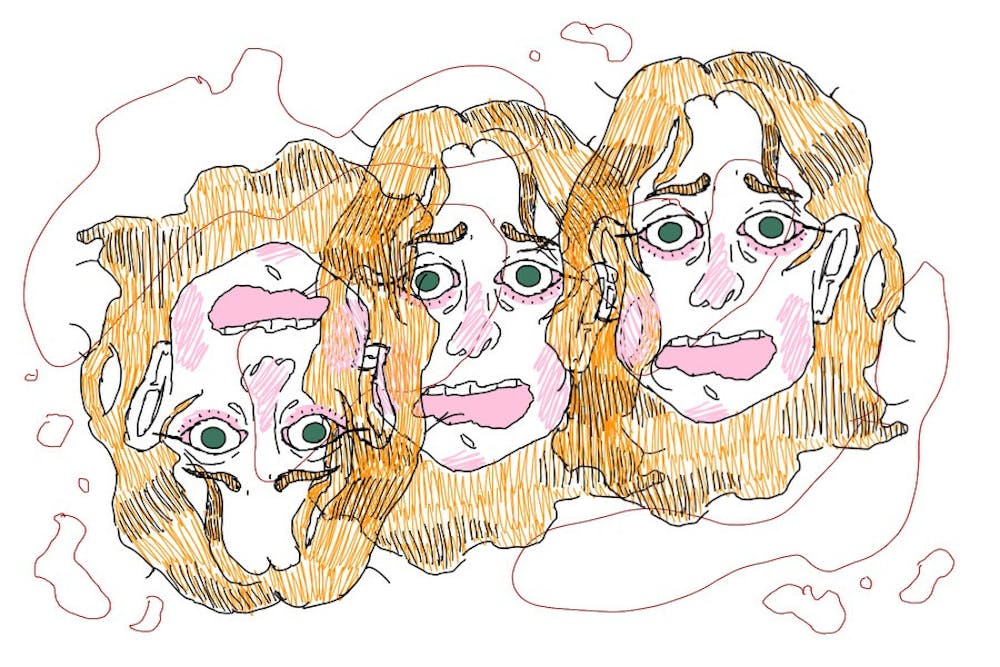Lights flicker and reflect across our frightened faces as we pick popcorn kernels out of our braces. We laugh uncontrollably, to mask the pure terror that resides beneath. Desperate to encounter an adrenaline rush like the drugs we’re too young to take, we spend most of our free time riding roller coasters and finding movies that make our stomachs lurch. Once we’re approaching the 100-foot drop or the cinematic climax in which we know all the characters will be viciously killed before our eyes, we convince ourselves that we’re not scared at all. It’s completely predictable. We know how this ends. There’s no reason to fear the inevitable.
~~~
The only thing scarier than a horror movie is a room full of fourth-graders watching one. At age 10 (Roman numeral X) my friends and I started a horror movie club. Admission was highly selective; the two requirements were that your parents let you watch PG-13 movies and that you weren’t scared of horror films. We even created a Gmail account (horrormovieclub13@gmail.com), from which we would send official horror movie club newsletters and meeting times to our five fearless members.
The horror movie club was one of my earliest forms of rebellion. There was something liberating about the naked eye encountering images it was not supposed to see. There still is nothing like the sensation of physically cringing out of deep discomfort, which occurred several times during my most recent horror watch: A24’s X. It wasn’t that I was too scared to look, but rather that I was physically repulsed by watching an old woman creepily grope a young girl in bed and then attempt to kill her. Watching X fit into my conception of the horror genre as an adult, which is one of perturbed escapism and inquisitive shock. My experience with horror has changed with age from one of pure adrenaline and rebellion.
Back in 2011, our parents insisted the horror movie club start with the classics. Supportive of our endeavors yet hesitant to let us barrel full throttle into contemporary R-rated projects, they hoped early horror films would be enough to quench our wicked desires. Alas, we ended up cackling at the embarrassingly low-quality special effects present in Poltergeist (1982) and Jaws (1975). Despite watching Jaws on an outdoor projector while we swam around our friend’s pool with imaginary sharks waiting to pounce, none of us emerged from the viewing experience afraid of the ocean. Instead, we wanted more.
Unfamiliar with the precise perversions and practices of the horror genre, we relished the suspense spiraling through our spines during The Shining (1980) and The Birds (1963). We experimented with supernatural psychological thrillers like The Sixth Sense (1999), which made us think in addition to feel. It was the first movie we watched that necessitated us paying careful attention to the plot, which was a good exercise for our scattered 10-year-old attention spans, but we craved true horror. Eventually, we made our way to true slashers like Scream (1996) and Fright Night (1985). Even at our young age, we knew how dumb these movies were. It was not evident to us at the time, however, whether or not they were trying to be.
My favorites remained the ones that told realistic stories and made me care about the characters so much that I was devastated to see them die. The horror genre has historically contained some of these—The Silence of the Lambs (1991), Psycho (1960)—and has trended in this general direction in the decade since my graduation from elementary school. Amongst myriad corny remakes of classic horror films have emerged tasteful original projects like The Witch (2015), Get Out (2017), A Quiet Place (2018), and Midsommar (2019). Directors continue to take risks with genre-bending horror films that encapsulate much more social commentary than they do bloody bodies and murderous monsters.
Most recently, I was brought back to my fourth-grade horror movie craze with Ti West’s X (2022). A group of actors drive to rural Texas to make an adult film, and when their elderly hosts catch a glimpse of the sex scenes in action, the couple becomes increasingly physically sinister. A24’s signature grainy sepia blankets a film that dives headfirst into the subversions and proximities of sex and death. The meta, sex-obsessed, gory plot unravels like a semi-gimmicky crossover between Boogie Nights (1997) and Texas Chainsaw Massacre (1974), with a consciousness akin to Cronenberg’s Crash (1996). It’s a bloody love letter to the 70s/80s slasher slate with a heightened nuance created within the themes of sex and beauty. I could have done without the random acoustic “Landslide” cover, but the placement of “The Reaper” by Blue Oyster Cult was brilliant.
The whole theater held its breath and laughed concurrently, with a few members of the audience even shouting, “Yuck!” out loud, as the truck blasting “The Reaper” ran over a dying body on the ground. West does not shy away from gore—we see bodies battered and broken on screen from cars, guns, and even a menacing alligator. But the carnage is intentional and symbolic; it adds substance to the film’s examination of bodies as both sexual and mortal entities.
The viewing experience brought me back to the horror movie club, though this time I was surrounded by strangers and old enough to pick up on subtext. In this film, Wayne repeatedly tells Mia that this porno she’s starring in is going to be her big break. “You’ve got the X factor,” he tells her. So does X as a film; horrifying, jarring, and thoroughly amusing, it’s got all the makings of a horror movie club favorite. But I wouldn’t advise letting your fourth grader watch it. In fact, I’d insist you do not.




